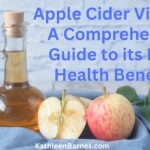It’s not just what you put in your body, but what you put on it that can have a profound effect on your health.
It sometimes shocks me to see people who wouldn’t dream of eating processed foods slathering on chemical-laden moisturizers or sunscreens. What you put on your body is just as important as what you put in it. It’s just that many of us don’t realize that skin is the largest human organ and that is it very permeable, meaning is easily absorbs anything you put on it.
Have you read the labels in your bathroom lately? What’s in your shampoo? Your conditioner? Your moisturizer? Makeup? Soap? Toothpaste? If you aren’t aware of the chemical names for cancer-causing chemicals and endocrine disruptors that are rife in personal care products, you’ll probably be shocked.
I’ve developed a couple of simple solutions to the dilemma of what to put on my skin:
-
Don’t wear it if you wouldn’t eat it.
-
Don’t buy it if you can’t pronounce all the ingredients easily.
Here’s a primer of commonly used dangerous chemicals. Avoid these and you and your family will be healthier:
Phthalates: These petrochemicals are used to make rigid plastics soft and pliable. They’re also commonly added to cosmetics and other personal care products. Phthalates are linked to elevated rates of endocrine disruption and are possibly carcinogenic.
Perfumes, nail polishes, lotions, hair sprays and many other body care products contain phthalates also labeled DBP and DEHP. DBP is used extensively in body care products and DEHP is present in many household products, which we’ll address in the next chapter.
A study conducted by the U.S. Centers for Disease Control and Prevention (CDC) shows that the levels of phthalates in the body tissues of Americans was much higher than previously believed. Researchers found a metabolized form of dibutyl phthalate (DBP) in every single one of the 289 people tested, with highest levels in women of childbearing age (20 to 40). Researchers concluded this was most likely because so many women of that age wear makeup on a daily basis.
DEA and TEA (diethanolamine and triethanoalamine): These chemicals can interact with other chemicals in the products, forming carcinogenic nitrosamines. DEA and TEA are often shown on a label as attached to other ingredients, so the label may say “cocamide-DEA” or “TEA-sodium lauryl sulfate.”
Formaldehyde: Used as a preservative and often listed as quaternium 15 (which releases formaldehyde). Avoid products that contain any of this toxic chemical that can cause nerve damage, allergies, enhance your sensitivity to other chemicals and even cause cancer.
Bronopol: A pesticide and fungicide often found in bug repellant sticks. It is considered highly toxic to humans and its effects include carcinogenicity, reproductive and developmental toxicity, neurotoxicity and acute toxicity.
Dimethyl dimethyl hydantoin: A microbicide found in a wide range of products from hair conditioners to shampoos, hand soaps, baby wipes and sunscreens, DMDM hydantoin can break down to ingredients that trigger skin sensitivities.
Imidazolidinyl urea: Combined with parabens, this is the most widely used preservative in cosmetics. Classified as a known toxic chemical, the safety of imidazolidinyl urea is under investigation by the National Cancer Institute.
Parabens: Usually combined with other chemicals, parabens has been found in breast tissue samples of women with breast cancer, although no firm link has yet been scientifically established.
Simple, natural solutions
You don’t have to spend hundreds of dollars or knock yourself out to find safe, natural personal care products. Most health foods stores how have personal care and cosmetic lines that don’t have these dangerous chemicals.
But it can be even easier than that. Here are a few of my favorites:
Organic Coconut Oil: Coconut oil has a multitude of uses. This is a wonderful moisturizer. It’s a little oily, so I have to wait about half an hour after I put it on before the shine disappears. It’s also a great cuticle softener and nail strengthener, easily breaks down calluses (rub a little on your feet and then put on socks) and even is a good treatment for dry scalp and hair. A 64-ounce container set me back just $13 and it will last easily for two years.
Witch hazel: Grandma’s do-everything astringent, witch hazel tightens skin, dries oil skin and treats acne, cools down sunburn and eases the itch of contact dermatitis, hemorrhoids and bug bites or stings. I wouldn’t be without it! And It’s also ridiculously cheap. A 16-ounce bottle sells for $7 or less at your local pharmacy and will last easily for a year or more.
Castile soap: This olive oil based soap made from 100% plant oils is a great substitute for harsh chemical-based shampoos. It’s also a great body wash and non-drying face soap that has dozens of other household uses ranging from laundry detergent to carpet cleaner. You may be familiar with Dr. Bronner’s probably the best known castile soap, that sells for under $10 for 16 ounces at pharmacies and even supermarkets.
Baking soda (sodium bicarbonate): Baking soda makes a great toothpaste and breath odor neutralizer. It’s also a skin exfoliate and is excellent for removing excessive hair product from over-processed hair. Many people substitute baking soda for deodorant with mixed success. Ask your friends if it’s working! It cleans ground in dirt from hands and nails and softens skin. It also eases itching due to bug bites or other skin irritations plus a host of household cleaning uses too numerous to mention here. And it’s so cheap it’s barely worth mentioning the cost: about 89 cents a pound that will last for months.







